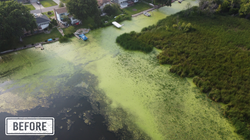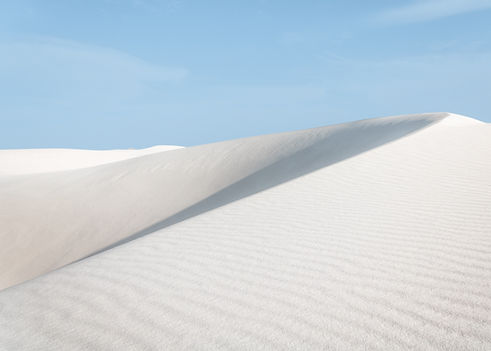Lake Health/Weeds
Welcome to the Lake Health/Weeds section of the Twin Lake Association website. Here, we delve into the crucial aspects of maintaining the pristine health of our beloved Twin Lakes. Our commitment to preserving the natural ecosystem and water quality is unwavering. In this section, you'll find valuable information about our ongoing efforts to monitor and manage aquatic vegetation, ensuring that our lakes remain a haven for recreation and a thriving habitat for diverse wildlife. Join us in our mission to sustain the beauty and vitality of Twin Lakes for generations to come.


August 2024 -
Lake weed removal by Premier Weed Removal.


Twin Lake
Weed Removal Project
Discover the transformation brought by the Twin Lake Weed Removal Project. Witness the beauty of our community with stunning before and after photos showcasing the remarkable changes. Scroll through the gallery and be amazed by the results.
2024 Plant Mgmt Plan (In Progress)
In 2023, Upper Twin experienced an explosive growth of native (non-invasive) submersed weeds including Coontail Pondweed, Sago Grass, Duckweed, Filamentous Algae, and Northern Watermilfoil. Association members inquired about the treatment process for the native weeds since the amount of weeds severely limited boating in July - September. We can apply for a permit anytime prior to August 1, 2024 to treat the native weeds and describe in detail where and why we want the treatment to occur. The application cost is $2,500 to treat 20+ acres. The next step is hiring a licensed plant surveyor to perform a site inspection which costs $1,500-$2,500. The DNR reviews the survey and issues a permit that identifies the areas and total acreage we can treat under the permit. We then hire a licensed company to perform mechanical control (cut or pull by hand or with equipment and remove & dispose on land) and/or apply herbacide control in accordance with the permit. The cost for herbicide treatment by a licensed company is $385 / acre so if we treat 15-23 acres the cost will be $5,775-$8,855. We do not have an estimate for mechanical control yet but other lake associations have indicated it costs more due to the need to do it at least twice a year to be effective and the cost of disposal with multiple dump trucks. Total estimated cost for native (non-invasive) chemical treatment is $15,000 and we wouldn't begin treatment until the weeds begin to grow in June.
The only prohibited invasive plant species we currently have on any of our lakes is Curlyleaf Pondweed which we have't treated since 2022. It is a fast growing species and unlike other plants it grows better in cold water and low light than any other plant. It emerges in early Spring and begins to die by mid-July. At full size, it can reach up to 15' and create dense mats that interfere with aquatic, recreational and fishing activities.
-
The estimated cost of Curlyleaf Pondweed treatment by a licensed company in 2024 is $385 / acre. Based on previous years (see history below), we will need to treat between 12-20 acres on Upper ($4620-$7700). The treatment is broad spectrum meaning it will kill all weeds it comes into contact with. However, the DNR only approves the treatment of Curlyleaf is early Spring before any other weeds have emerged which means the treatment has a limited effect on native weeds which grow in June or later.
-
The Association intends to apply for a grant request on behalf of Upper and Middle for Curlyleaf Pondweed treatment to the 2023 Aquatic Invasive Species Control Grant Program. The program which has $400,000 available for the control of 4 invasive weeds: Curlyleaf Pondweed, Eurasian Watermilfoil, Flowering Rush and Starry Stonewort. Grants reimburse expenses for the cost of pre-treatment surveys and the treatments on each lake. Applications are selected by random order until all funds are spent and the award amounts are determined by DNR approved project acreage. The grant award is $1,500 for the first 10 acres and $150 for each acre after that up to a max of $10,000. Lakes that did not receive grants in 2022 or 2023 (like ours) have a higher chance of a grant in 2024. Applications are due in early December and grant award notification is in January. If we receive a grant that covers the cost of Curlyleaf, we will have to pay for treatment from Association funds and wait for reimbursement. However, once we are reimbursed we can use Association funds to treat native (non-invasive) weeds that emerge in June or later.
 |  |
|---|---|
 |  |
 |  |
 |  |
 |  |
 |  |
 |  |
 |  |
 |  |
 |  |
 |  |
 |  |
 |  |
Lake Weeds Management & Mapping
Explore our comprehensive maps detailing our lake weeds management strategy.
The first map illustrates the route we’ll be taking to cut the lake weeds. The second map provides an in-depth view of the same areas, highlighting the depth from the surface to the plants, filamentous floating algae, and weed growth. We have delineated 42.63 acres, which is about 34% of the lake's littoral area. Additionally, filamentous floating algae is shown as an overlay with red squares.



The Association has never launched a major fund raising campaign. We have always managed to pay for invasive weed treatments with membership fees alone. But we currently only have 28 paying members. That means if we don't gain any new members before next summer, we will be short $12,000. We are looking to raise funds for 2024 treatments from two sources.
First, we need to increase the number of paying members in the Association for $100 per year. There are over 200 homes on our combined lakes. So please, help us spread the word to friends of the lake and neighbors and send them to this website to join!
Second, we need donations from Association members, local businesses, and frequent users of in any amount. We are running down on funds and need a major boost to pay for next year’s weed management plan AND other expenses that arise such as avian removal, fish stocking, etc. Please donate whatever you can afford by clicking here!
Association Treatment History
June of 2024 – Bought an Aquatic Weed Cutter and cut 42 acres of the lake.
2024 Weed Removal on Upper Twin Lake. Hired Premier Weed Removal. Removed weeds around Upper lake and also was hired by multiple neighbors to clean and cut their personal lake front. Cost $7200.00
2024 Curlyleaf Pondweed 18 acres.
2023 Negotiated a discounted rate for homeowners to purchase and apply Hydrothol on their shorelines. Requested permits for all interested homeowners.
2022 Curlyleaf Pondweed 16.2 acres Upper | Cost: $5,834
2020 Cattails & Waterlilies in Upper / Middle Channel | Cost $291
2017 Curlyleaf Pondweed 13.8 acres Upper | Cost: $3,568.72
2015 Curlyleaf Pondweed 12 acres Upper | Cost: $4,032
2012 Eurasian Milfoil 23.8 acres Upper | Cost $4,062.30
How to Treat
Your
Shoreline


Under Minnesota law, aquatic plants growing in public waters are the property of the state. Because of their value to the lake ecosystem, they may not be destroyed or transplanted unless authorized by the Commissioner of the Department of Natural Resources as stipulated in the Aquatic Plant Management Rules. A "public water" is generally any body of water 2.5 acres or larger within an incorporated city limit, or 10 acres or larger in rural areas.
A permit is NOT needed as a property owner to create or maintain a swimming or boat docking area if you follow certain rules:
-
You clear no more than a 2,500 sf area (50' wide by 50' deep).
-
You clear a boat channel no more than 15 ft wide as long as necessary to reach open water. If you are clearing lilypads, you may use mechanical means.
-
You cut or pull the weeds by hand or with hand operated or powered tools.
-
You must dispose of all weeds you cut or pull on land either on your own property or elsewhere. If you transport it, you need to download this form.
A permit is REQUIRED as a property owner to do the following:
-
Apply herbicides or algecides in any amount.
-
Destroy emergent vegetation (cattails, lilypads).
-
Use automated mechanical plant control devices.
-
Use a hydrolic jet (e.g. aqua-thruster) that disturbs the lake bottom. You may only use one of these without a permit IF it is set near the water surface to blow away surface debris and algae.
-
Use a lake bottom barrier / weed mat to prevent or destroy growth.
-
Remove aquatic plants where they do NOT interfere with swimming, boating or other recreation.
Why We Have Weed Growth
Lakes undergo a natural aging process by which, over thousands of years, they slowly fill up with sediment. This sediment is primarily decayed plant and animal matter and eroded soil that has washed in from the surrounding land. The sediment also contains nutrients such as nitrogen and phosphorous. As the sediment builds up, the bottom sediments become more fertile, and conditions in the lake become more favorable for aquatic plant growth.
Like their land-based cousins, aquatic plants need sunlight, water, carbon dioxide, and nutrients-including phosphorous, nitrogen, and potassium to grow. The watershed is the primary source of nutrients. Northern Minnesota lakes typically have few aquatic plants because the watershed is low in phosphorous and nitrogen. In central and southern Minnesota, where the soils are naturally more fertile, more nitrogen and phosphorous enter lakes from the watershed, so these nutrient-rich lakes tend to have more aquatic plants and algae.
During periods of heavy rainfall, increased runoff brings more nutrients into a lake. These additional nutrients may be released from flooded soils or carried into the lake on silt or clay particles. Excess nutrients often boost plant growth, particularly algae or free-floating aquatic plants. If rainfall and water levels are normal, nutrient levels and plant growth tend to remain stable. Conversely, low water levels can promote plant growth, particularly that of rooted plants, by expanding the shallow-water areas available for growth.
Intense cultivation or land development near a lake can also increase the amount of aquatic plants by increasing the amount of nutrients flowing from the watershed into the water. Houses, paved driveways, and other hard surfaces adds to the amount of nutrient-rich runoff that flows into lakes and streams. For all of these reasons, lakes and ponds that did not support a dense growth of aquatic plants in their natural state may show increased growth because of human activities. Reduce phosphorus pollution to protect our lakes by only using phosphorus-free lawn fertilizer!!
